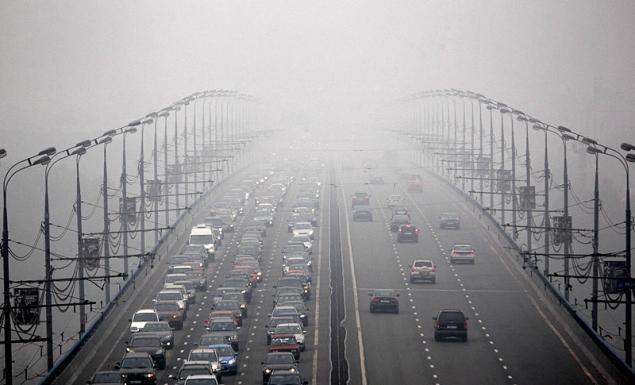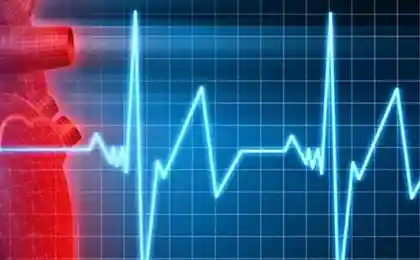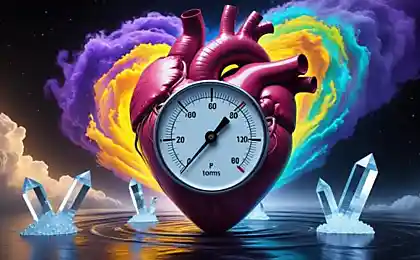439
Scientists have found a link between car noise, dirty air and high blood pressure

If you constantly have to complain about the dirty air in your neighborhood and the traffic noise outside the window, there is a risk that in the future will be faced with hypertension. To such conclusion the researchers who for nine years has analyzed data from more than 41 thousand people in five countries.
The results of this large-scale study published in the European Heart Journal 25 Oct. They showed that every hundredth person living in a dirty area, developing hypertension. Noise and dirty air give the same risk weight in humans, the body mass index (BMI) between 25-30. The researchers note that high blood pressure is one of the most important risk factors for premature illness and death.
This study is the first of its kind when at the same time studied the effect of dirty air and traffic noise on human health. The researchers found that traffic noise is associated with the increase in the number of hypertensive patients. They also assessed the risks associated with noise, apart from dirty air.
In total, the study involved 41 072 person from Norway, Sweden, Denmark, Germany and Spain. It became a part of the project ESCAPE (European Study of Cohorts for Air Pollution Effects) that examines long-term effects of dirty air on human health in Europe. In the first phase, the volunteers provided information about the pressure status. When they joined the study, none of them suffered from high blood pressure. In subsequent years, all participants were regularly screened. After analyzing the data, scientists estimate that of all volunteers in 6 of 207 persons (15%) were diagnosed with arterial hypertension. They prescribe medication to reduce the pressure.
In 2008-2011, near the houses of the participants, was artificially created adverse conditions. The process was divided into three two-week period due to seasonal effects. Scientists have modeled the concentration of particulate pollutants — particulate matter in the atmosphere (TM). Such particles can be of different sizes. For example, PM10 are particles less than or equal to 10 µm in diameter. Similarly, PM2. 5 (less than or equal to 2.5 microns). There are still coarse PM (PM10 minus PM2. 5) and PM 2.5 absorbance (soot particles). All of them were used in this experiment. Solid particles were analyzed at 20 sites in each country. In 40 different areas with land use regression determined the concentration of nitric oxide. With regard to traffic noise, density of an automobile stream and the buzz created around the houses of the participants within the norms established by the EU Directive.
The researchers found that in areas where the concentration of PM2. 5 is 5 mcg/m3, the risk of hypertension increased by 22% compared to cleaner areas. Higher concentrations increase the probability of the disease even stronger. The inhabitants of houses, where the average noise level on the street at night is 50 decibels, the risk of cardiovascular disease increased by 6%. For comparison, conversational speech ranges from 45 to 60 decibels, depending on the volume of the voice, and the noise of the intensive street traffic often does not exceed 80 decibels. From this we can conclude that potential exposure to cardiovascular diseases is, even where noise level does not exceed permissible levels set by the EU Directive. In Russia, the allowable night time noise limit of 30 dB.
This is a very important aspect, because the legislation does not protect the European population from the adverse effects of transport noise. Scientists believe that the results of the study are important to public health and require the introduction of more stringent or restrictive standards.
It is known that when a person is busy with something, a long noise pollution reduces concentration and increases the likelihood of errors. In addition, noise can disrupt metabolism, negatively affect the nervous system, can lead to peptic ulcer and other diseases. It's too loud (over 100 decibels) leads to rupture of the eardrum. As a result, the hearing is either greatly reduced or comes deafness.
According to the study, "Leaders" on transport noise and density of traffic cars appeared in parts of Sweden and Spain. The highest average level of contamination observed in Central and southern Europe – Germany and Spain. In Norway, Sweden and Denmark on the streets quieter.
Professor of environmental epidemiology at the Düsseldorf University. Heinrich Heine Barbara Hoffman, who conducted the analysis confirmed that prolonged exposure to particulate air pollution is associated with increased incidence of hypertension. And since almost all of us throughout life exposed to the dangerous effect of dirty air, risking health problems is large enough.
There is a likelihood that the polluted air and the noise have different impacts on the normal functioning of the body, or only partially overlap. Possible biological consequences of the negative impact of dirty air on the functioning of the blood vessels of the heart and blood vessels include local and systemic inflammation, oxidative stress and disorders of the nervous system.
Source: geektimes.ru/post/281972/
Halloween close
Dinosaurs could be smarter than assumed. Fossilized brain iguanodont examined under a microscope























